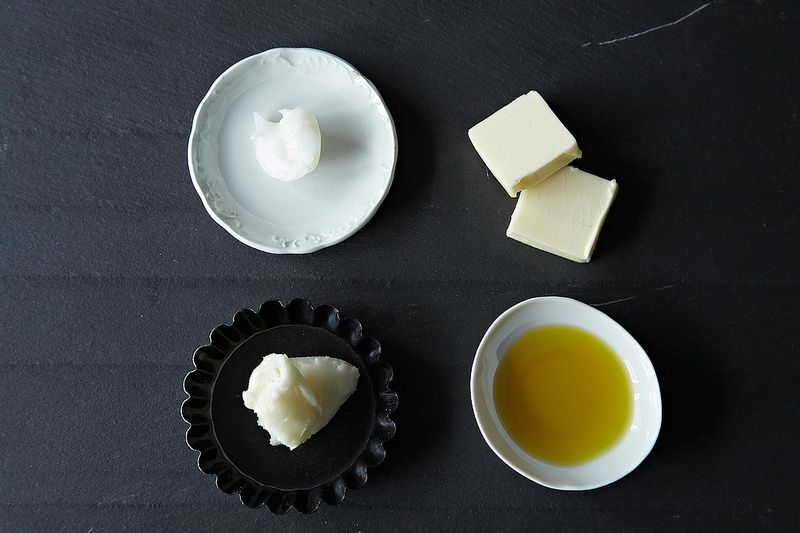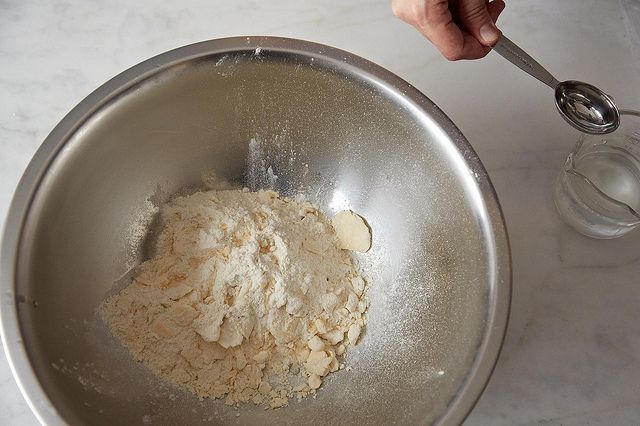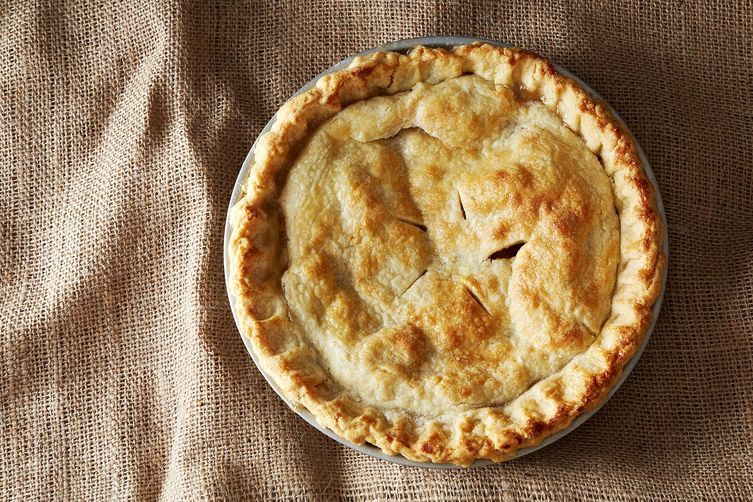Food52's Automagic Holiday Menu Maker

Food52's Automagic Holiday Menu Maker
Choose your holiday adventure! Our Automagic Menu Maker is here to help.
View MakerPopular on Food52
Continue After Advertisement
31 Comments
sewgirl
June 6, 2020
My best crusts are with 50/50 rendered lard/coconut oil leaveing lima bean sized chunks, part of a small egg, vinegar or lemon, more salt than you would think and cold water. Do not compact, just push together and chill well before rolling out.
Janey D.
July 6, 2017
Totally agree with the author. The article has similar conclusions to the ones made here: http://www.indexbox.co.uk/blog/rising-food-industry-demand-for-cheaper-fats-to-propel-the-us-oils-and-fats-consumption/
YIJU L.
November 15, 2016
Hi Erin,have you try it with coconut oil for the crust dough?cuz if we chill the coconut oil in the fridge ahead, it would also as solid as butter which might be easy to work with,just wondering about this.
Brian P.
January 6, 2016
I've always used shortening or shortening/butter combo. Was never happy w/ the shortening taste (and was out of it), so I tried coconut oil with 2T. of butter. The dough was quite hard after refrigeration (for roll-out) but the flavor and texture turned out great!
Gary
December 30, 2015
I have always used my Mom's (from Betty Crocker I think) oil based recipe. I dont agree with article in that I think this is by far the best tasting crust. It is difficult to work with and probably not as flakey. But taste trumps those downsides.
Steven M.
September 15, 2015
I have now switched over to oil based pie crust for everything. I don't know, I just like that texture better. I think it might be because of nostalgia for the Hostess fruit pies that I used to eat as a kid.
Craig O.
October 19, 2014
Does anyone know where I can get leaf lard in the Los Angeles area?
Emilie
October 20, 2014
I can't find good quality leaf lard where I live so order it from Dietrich's Meats in PA. They ship anywhere and their lard makes an incredible pie crust and biscuit. (I do half lard half butter.)
Craig O.
October 21, 2014
Thank you, Emilie. I also lucked out and found a meat market nearby that is a reliable source of leafing lard and un-rendered lard.
Jay C.
February 23, 2015
In LA, visit the Spanish markets and butcher shops. They carry lard. I usually buy it at Vallarta.
Joycene
October 19, 2014
In recent years I have used 1/2 butter, 1/2 butter-flavored shortening. It makes a great crust with the butter adding great flavor. The butter-flavored shortening, I think, also adds flavor and makes for a lighter crust than all butter.
robert F.
September 10, 2014
Julia used butter augmented with 1-2 tablespoons shortening......but for the perfect crust a low gluten flour is best.....pastry flour
Lizbeth C.
April 7, 2014
In baking I prefer to use butter because it adds flavor to the pie crust or any food that has mixture of it and it is very well accustomed in baking pastries or cakes. kindly visit http://www.megaoils.com/butter-oil/
Craig O.
November 12, 2013
I use butter and egg for fruit pies. Whisk the egg and add 3 tablespoons lemon juice or cider vinegar. To keep things cold, I store my flour in the freezer and refrigerate my mixing bowl. Cut the butter into peanut-size pieces and use as little cold water as needed to form the dough into an inch-thick disc, which I refrigerate at least two hours before rolling. I flatten the dough somewhat with my fist, roll it quickly and handle as little as possible.
Baketress
November 1, 2013
Absolutely agree with the ladies below- butter and leaf lard combo! You get the best from the two worlds, exceptional flavor from butter and amazing flakiness from lard. I normally render about 8 pounds of leaf lard and it lasts me for a year.
Christina @.
October 31, 2013
Half butter, half leaf lard. I've struggled with every version of pie dough I've tried (all butter, all shortening, butter and shortening, egg, no egg, grated frozen butter, using a food processor, cutting in butter by hand) until I used this combination with my grandmother's base recipe.
I actually did a whole experiment to see which combination of fats worked best, and the butter/lard won hands down, and has been reliably easy to work with, flaky, and tasty for every pie I've made in the past year: http://myhomespunhome.wordpress.com/2012/10/04/perfecting-pie-crust-part-2/
Except now I don't know what I'll do if I can't get my hands on leaf lard :-(
I actually did a whole experiment to see which combination of fats worked best, and the butter/lard won hands down, and has been reliably easy to work with, flaky, and tasty for every pie I've made in the past year: http://myhomespunhome.wordpress.com/2012/10/04/perfecting-pie-crust-part-2/
Except now I don't know what I'll do if I can't get my hands on leaf lard :-(
Anne F.
December 24, 2016
You can order it off Amazon.com, just as you can Tenderflake Lard. The Tenderflake is shipped from Montana; you can only buy it in Canada.
mrslarkin
October 30, 2013
On Monday, I rendered 7 1/2 pounds of leaf lard. On Tuesday, I made the most amazing scallion pancakes. Can't wait to make some pie crust. And biscuits. And lard bread. And bizcochitos.
MaggieRosenthal
October 30, 2013
For some reason it's never occurred to me to make a crust with oil. I have to admit, I'm a butter fan myself (easy to find in all stores/in my freezer and very flavorful), but this article makes me want to experiment with other kinds!
Alice G.
October 30, 2013
I swear by all lard for a majority of my crusts. It makes the flakiest crust and has an incredible flavor for quiches and savory tarts, and I think it's a nice contrast to sweet fruit fillings. However, I will do a half lard-half butter crust for more delicately flavored custard and cream pies. The last time I used all shortening for a pie it tasted...artificial, and completely lacking in personality.
ChefJune
October 30, 2013
For me, the best crusts come from a 50/50 combo of lard and butter. You get the flakiness of the lard with the flavor of the butter. Although I grew up in the 50's and made my first pies with shortening, I won't use it any more because of the health dangers of hydrogenated fat. Imho we get enough of it incidentally in prepared foods, No need to add it to my own cooking.






See what other Food52 readers are saying.